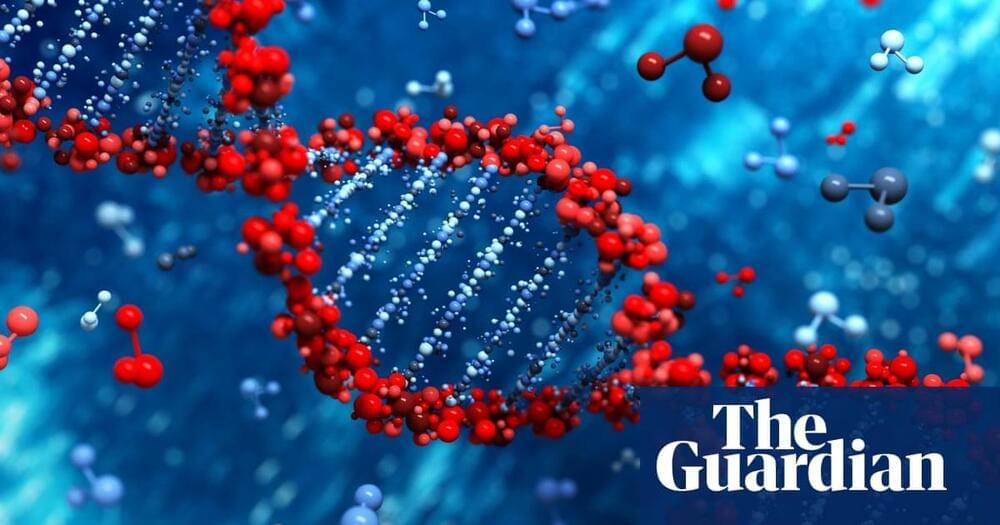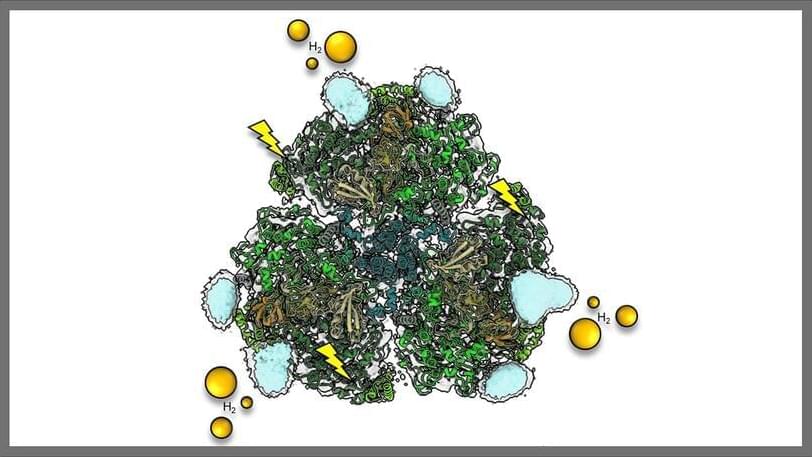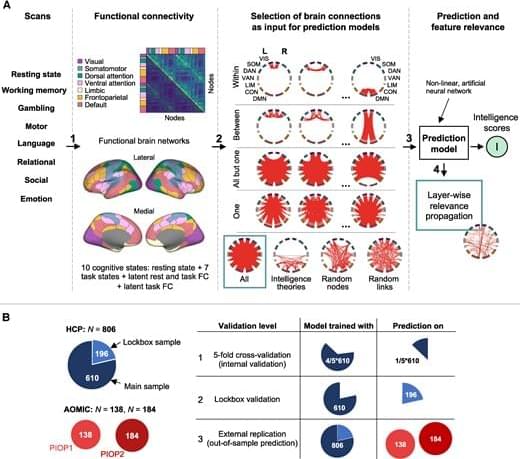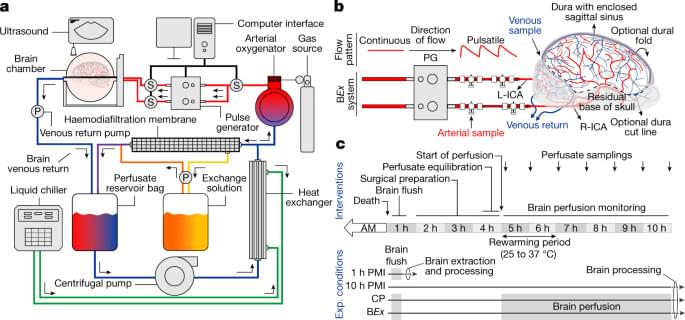Page 170
Dec 12, 2024
‘Unprecedented risk’ to life on Earth: Scientists call for halt on ‘mirror life’ microbe research
Posted by Jeremy Dylan Batterson in category: biological
Real life modern Frankenstein.
World-leading scientists have called for a halt on research to create “mirror life” microbes amid concerns that the synthetic organisms would present an “unprecedented risk” to life on Earth.
The international group of Nobel laureates and other experts warn that mirror bacteria, constructed from mirror images of molecules found in nature, could become established in the environment and slip past the immune defences of natural organisms, putting humans, animals and plants at risk of lethal infections.
Dec 12, 2024
China develops record-breaking 504-qubit quantum computer Tianyan-504
Posted by Omuterema Akhahenda in categories: computing, quantum physics

China has reached a new milestone in quantum computing with the development of Tianyan-504, a powerful 504-qubit quantum computer.
The Tianyan-504 quantum computer was developed through collaboration between the China Telecom Quantum Group (CTQG), the Center for Excellence in Quantum Information and Quantum Physics under the Chinese Academy of Sciences, and QuantumCTek, a quantum technology company based in Anhui Province.
Continue reading “China develops record-breaking 504-qubit quantum computer Tianyan-504” »
Dec 12, 2024
Unveiling the structure of a photosynthetic catalyst that turns light into hydrogen fuel
Posted by Omuterema Akhahenda in categories: chemistry, nanotechnology, particle physics, sustainability
Photosynthesis is one of the most efficient natural processes for converting light energy from the sun into chemical energy vital for life on earth. Proteins called photosystems are critical to this process and are responsible for the conversion of light energy to chemical energy.
Combining one kind of these proteins, called photosystem I (PSI), with platinum nanoparticles, microscopic particles that can perform a chemical reaction that produces hydrogen — a valuable clean energy source — creates a biohybrid catalyst. That is, the light absorbed by PSI drives hydrogen production by the platinum nanoparticle.
In a recent breakthrough, researchers at the U.S. Department of Energy’s (DOE) Argonne National Laboratory and Yale University have determined the structure of the PSI biohybrid solar fuel catalyst. Building on more than 13 years of research pioneered at Argonne, the team reports the first high-resolution view of a biohybrid structure, using an electron microscopy method called cryo-EM. With structural information in hand, this advancement opens the door for researchers to develop biohybrid solar fuel systems with improved performance, which would provide a sustainable alternative to traditional energy sources.
Dec 12, 2024
NASA’s Solar Eclipse Mission: Exploring the Sun’s Impact on Earth
Posted by Laurence Tognetti, Labroots Inc. in category: space
What can solar eclipses teach us about the Sun and how it interacts with the Earth’s atmosphere? This is what a recent press briefing conducted at the American Geophysical Union 2024 Fall Meeting hopes to address as a team of scientists from the Citizen CATE 2024 (Continental-America Telescopic Eclipse) project reported on findings that were obtained during the April 8, 2024, total solar eclipse over North America.
“Scientists and tens of thousands of volunteer observers were stationed throughout the Moon’s shadow,” said Dr. Kelly Korreck, who is the NASA Program Manager for the 2023 and 2024 Solar Eclipses. “Their efforts were a crucial part of the Heliophysics Big Year – helping us to learn more about the Sun and how it affects Earth’s atmosphere when our star’s light temporarily disappears from view.”
Consisting of a combination of both professional and citizen scientists using a combination of images, spectroscopy, and ham radios, the large team comprised of Citizen CATE 2024 made groundbreaking observations of the 2024 solar eclipse, along with ascertaining how radio signals were influenced during the eclipse. In the end, the team of more than 800 individuals discovered that eclipses produce atmospheric gravity waves, or ripples within the Earth’s atmosphere. Additionally, the ham radio operators, comprised of more than 6,350 individuals, discovered that radio communications improved both within and outside the eclipses’ path of totality at frequencies between 1 to 7 Megahertz, whereas communications became worse at frequencies above 10 Megahertz.
Dec 12, 2024
Cerebras Demonstrates Trillion Parameter Model Training on a Single CS-3 System
Posted by Cecile G. Tamura in category: futurism
CePO enables Llama3.3 70B to outperform flagship Llama 3.1 405B model and leading closed source models.
Dec 12, 2024
Choosing explanation over performance: Insights from machine learning-based prediction of human intelligence from brain connectivity
Posted by Cecile G. Tamura in categories: life extension, robotics/AI
Neuroscientific research on human behavior and cognition has methodologically moved from unimodal explanatory approaches to machine learning-based predictive modeling (1). This implies a shift from standard approaches testing for associations between behavior and single neurobiological variables within one sample (unimodal explanatory research) to the identification of relationships between behavior and multiple neurobiological variables to forecast behavior of unseen individuals across samples (multimodal predictive research) (2). Modern machine learning techniques can learn such general relations in neural data (2, 3) and have consequently become increasingly prominent also in research on fundamental psychological constructs like intelligence (4).
Intelligence captures the general cognitive ability level of an individual person and predicts crucial life outcomes, such as academic achievement, health, and longevity (5, 6). Multiple psychometrical theories about the underlying conceptual structure of intelligence have been proposed. For example, Spearman (7) noticed that a person’s performance on different cognitive tasks is positively correlated and suggested that this “positive manifold” results from an underlying common factor—general intelligence (g). A decomposition of the g-factor into fluid (gF) and crystallized (gC) components was later proposed by Cattell (8, 9). While fluid intelligence is assumed to mainly consist of inductive and deductive reasoning abilities that are rather independent of prior knowledge and cultural influences, crystallized intelligence reflects the ability to apply acquired knowledge and thus depends on experience and culture (10).
Neurobiological correlates of intelligence differences were identified in brain structure (11) and brain function (12). However, rather than disclose a single “intelligence brain region”, meta-analyses and systematic reviews suggest the involvement of a distributed brain network (13–15), thus paving the way for proposals of whole-brain structural and functional connectivity (FC) underlying intelligence (16, 17). While the great majority of such studies used an explanatory approach, recently, an increasing number of machine learning-based techniques were developed and applied to predict intelligence from brain features (4, 18, 19). Although intrinsic FC measured during the (task-free) resting state has enabled robust prediction of intelligence (19), prediction performance can be boosted by measuring connectivity during task performance (18, 20).
Dec 12, 2024
New type of lithium battery can drive EVs over 5 million miles
Posted by Quinn Sena in categories: energy, sustainability

Li-ion batteries that last beyond the life cycle of the EV can be bundled into energy storage solution for renewable energy projects.
Dec 12, 2024
Restoration of brain circulation and cellular functions hours post-mortem
Posted by Quinn Sena in categories: biotech/medical, neuroscience
A specialized technology can restore and preserve microcirculation and cellular functions hours post-mortem in an isolated pig brain.
Dec 12, 2024
Catalyst ‘breathes’ new life into acrylonitrile production
Posted by Shubham Ghosh Roy in categories: chemistry, energy
A team of engineers is reimagining one of the essential processes in modern manufacturing. Their goal? To transform how a chemical called acrylonitrile (ACN) is made—not by building world-scale manufacturing sites, but by using smaller-scale, modular reactors that can work if they let the catalyst, in a sense, “breathe.”
Their article, titled “Propene Ammoxidation over an Industrial Bismuth Molybdate-Based Catalyst Using Forced Dynamic Operation,” is published in Applied Catalysis A: General.
ACN is everywhere, from carbon fibers in sports equipment to acrylics in car parts and textiles. Traditionally, producing it requires a continuous, energy-intensive process. But now, researchers at the University of Virginia and the University of Houston have shown that by pausing to “inhale” fresh oxygen, a chemical catalyst can produce ACN more efficiently. This discovery could open the door to smaller, versatile production facilities that adapt to fluctuating needs.















